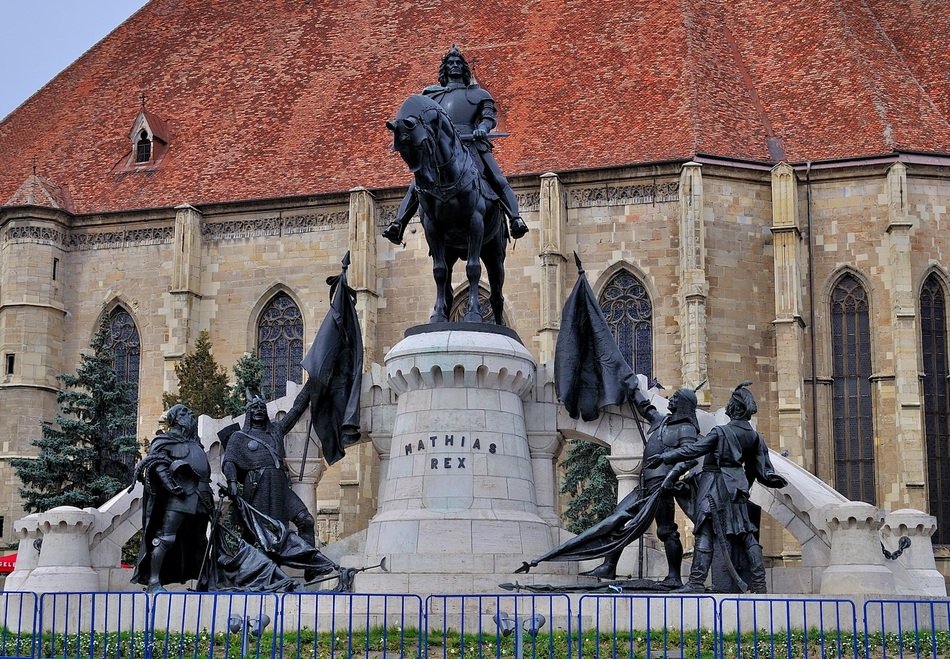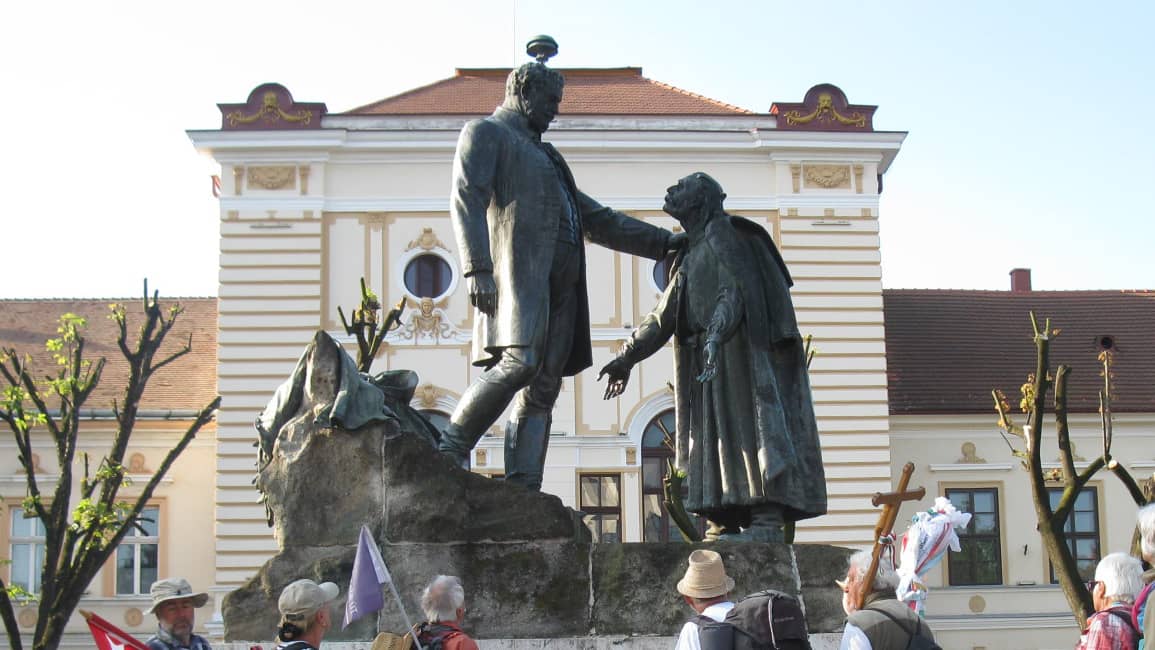An excellent way to taste just a sample of the rich and sometimes tumultuous cultural heritage of Transylvania is to take a closer look at the many statues found in the cities across the region.
The statue of Matthias Corvinus in Kolozsvár/Cluj stands perhaps as one of the most famous. Also known as the Mathias Rex statue, a work of János Fadrusz, it depicts Matthias I, also known in Hungarian as Hunyadi Mátyás (23 February 1443 – 6 April 1490), who was King of Hungary and Croatia from 1458 to 1490.

King Matthias appears on horseback on a high pedestal surrounded by his generals holding flags of the military battalions they have defeated. The statue was first dedicated in 1902 and at a certain point in its history, the Romanian governance of the city of Kolozsvár/Cluj put a small plaque on the statue with a text that suggested that the king was in fact of Romanian origin, a rather questionable interpretation. Even the flag of Valahia (an old Romanian region) appears among the other flags of the defeated battalions, which means the were also conquered. Changing historical facts seems to be common practice in Romania. For more on King Matthias, we outlined the Transylvanian locations visited by the famed leader.
Another well known statue depicts Miklós Wesselényi and stands in Zilah/Zalău, the seat of Szilágy/Sălaj County. Wesselényi is remembered as a Hungarian statesman, leader of the upper house of the Diet, member of the Board of the Hungarian Academy of Sciences, and hero of the 1838 flood in Pest. It’s also the work of Janos Fadrusz.

But wait. Not all of the great statues are of famous, Hungarian men. Nagyvárad/Oradea holds a beautiful statue of the first, leading Hungarian woman in Transylvania, Zsuzsanna Lorántffy. Princess consort of Transylvania by marriage to György Rákóczi I, Prince of Transylvania, Lorántffy was a devout Calvinist who assisted her husband in his successful struggle to introduce Protestant reforms in the Transylvanian church. At the same time she was a staunch advocate for the educational rights of the children of the feudal tenants, including all children regardless of ethnicity. The statue is very simple, reflecting the puritan character of Zsuzsanna Lorántffy and is located on the banks of the river Kőrös/Cris in front of an old Hungarian Protestant church and residence of bishop László Tőkés, who commissioned this statue.